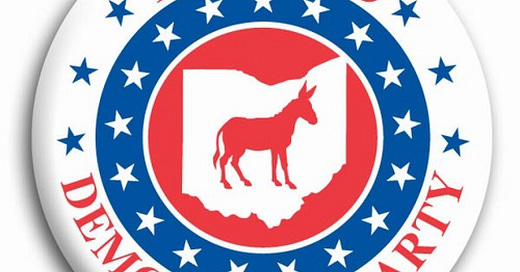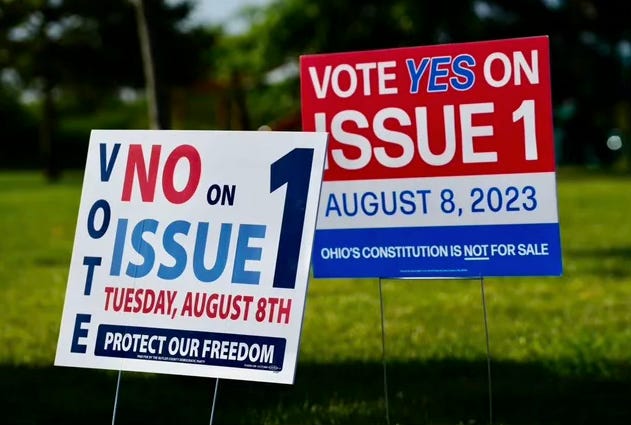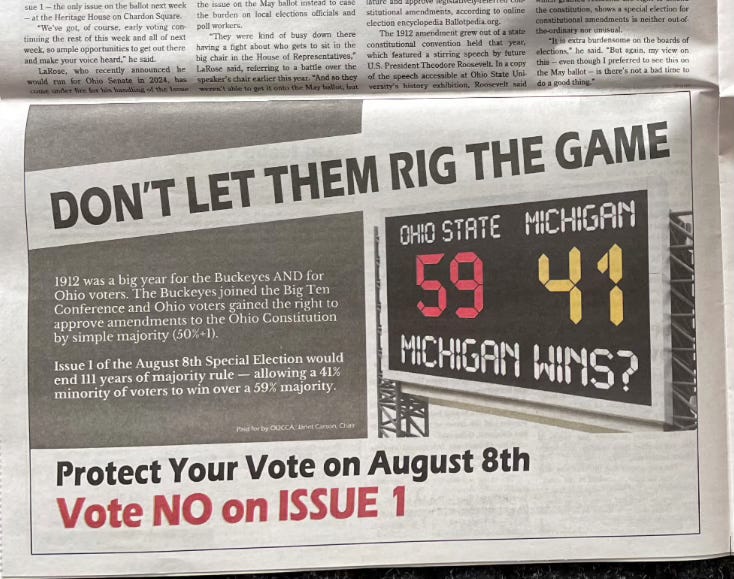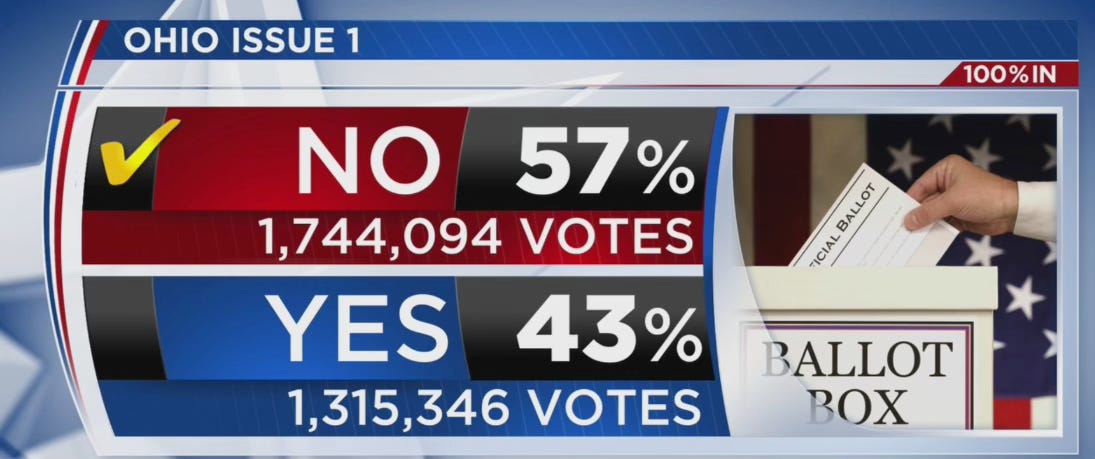Janet Carson, President of the Ohio Democratic County Chairs Association, usually spends summertime in her garden. But in Spring 2023 the Ohio State Legislature proposed a constitutional amendment known as Issue 1.
If approved by voters, passing any future constitutional amendments would require 60% of votes. This included the upcoming statewide referendum on reproductive rights. Issue 1’s special election, scheduled for August 8, upended Janet’s summer plans.
When Issue 1 made the news, activists around the country tuned in. Not only would a ‘YES’ vote affect passage of initiatives for years to come, but it would make passage of the reproductive rights referendum that November highly unlikely. Polls showed approval ratings at a decisive 58%, but not high enough to clear a new 60% margin.
Democratic County Chairs had just three months to educate and motivate voters. To fight Issue 1, Janet and Ohio volunteers scrambled to prepare thousands of postcards and yard signs for an unprecedented summer election. Grassroots groups around the country stepped in to help. By mid-July, volunteers were ready to distribute yard signs statewide and mail 40,000 postcards close to Election Day. That’s when Swing Blue Alliance got involved.
When Swing Blue Alliance leaders Steve Vogel and Susan Labandibar contacted Janet, she was nervous. Social media indicators were positive, but early voting was higher in rural areas than in urban, meaning that more conservative Republicans were making their voices heard. Voter turnout was still a big question.
Could a Low Budget ($7,500) Initiative in the Last Weeks Make a Difference?
Swing Blue’s proposal intrigued Janet. “They had the idea of a yard sign with a football score, showing Ohio State would lose to its rival Michigan, even if it had more points.”
Janet liked the idea because:
Football is huge in Ohio.
The sign had a visual that caught men’s attention.
It wasn’t the typical ad with rhetoric that makes some tune out
College students could identify with the university rivalry.
The message relied on a basic understanding of fairness.
But Janet hesitated. A yard sign for rural Ohio, where cars move quickly, more needs to be understood quickly. A football meme might be popular on social media, but it would not be obvious to first time viewers. And yard signs take three weeks to print and more legwork to distribute. Janet counter-proposed publishing print ads in small, local newspapers.
After conferring with Democratic County Chairs, Janet identified a dozen local news outlets. Swing Blue paid for half-page color ads in each. The image got plenty of attention.
Janet remembers hearing comments like: “Hey, I saw that ad in the paper.” “We had a lot of positive comments like that that let us know people saw and remembered the ad. In Geauga County, where 2020 voters went for Trump by 23 percentage points, voters REJECTED Issue 1 by 52.2 - 47.8! The ad got across the idea that the proposal was unfair.”
Lessons Learned
While campaigns can’t always take advantage of resources offered at a late date, a collaborative effort can still be highly effective. Making time for such exchanges is vital. Out-of-state grassroots groups can bring great ideas and local knowledge can vet, test, or improve on each idea. And once again, the collaboration showed that appropriately placed, clever, relatable messaging motivates voters.










